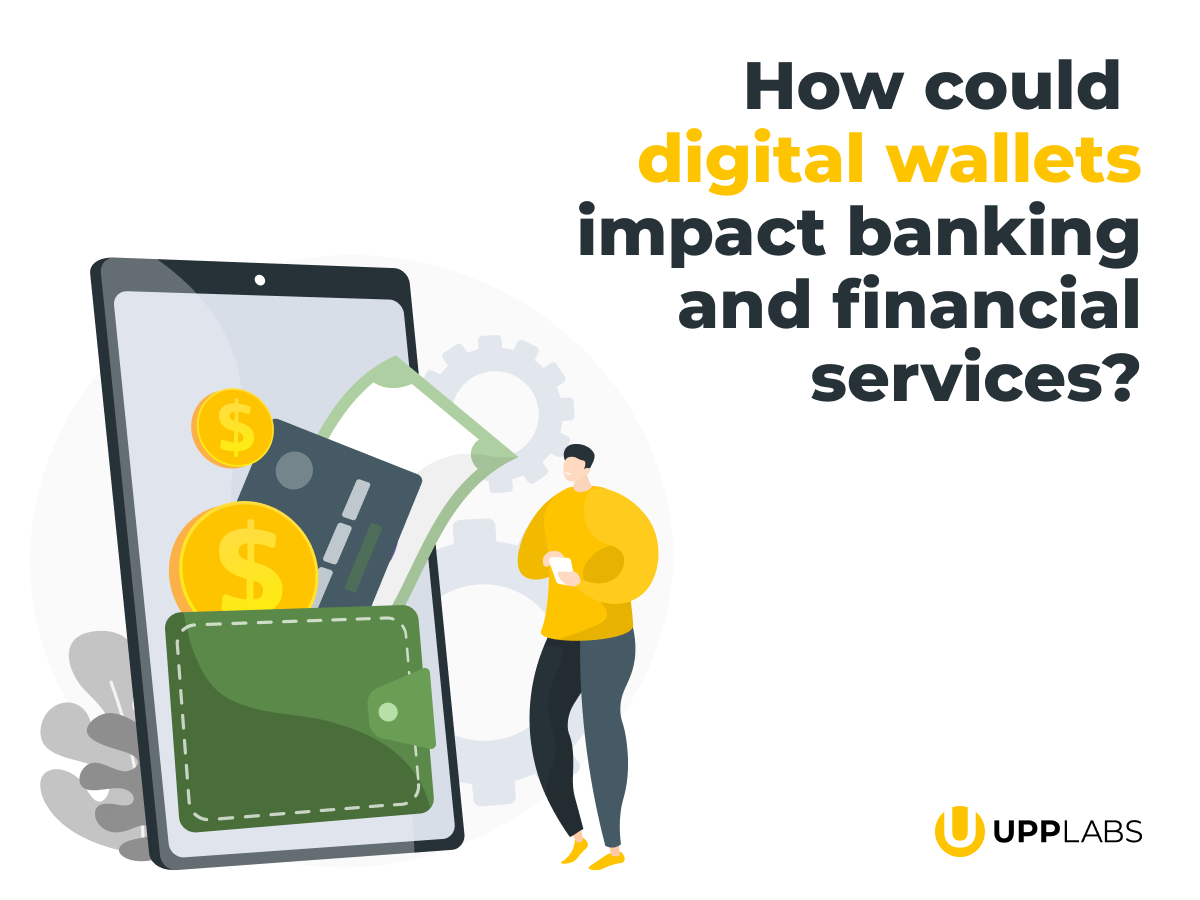From projects’ requirements to an effective solution: business goals and tech stack…
In this article, we would like to present to you the real-world Fintech case studies that we implemented, including rebuilding legacy solutions and rebuilding payment systems. Each project required the rebuilding and updating of the old system to the new one, both on the frontend and on the backend sides. Besides, there were other challenges that we are ready to share with you.
Fintech often refers to the combination of finance and technology, which is used to process the business operations and financial services whether it is a software, a service, or a business that implements the technologically progressive ways to make financial processes more efficient by introducing traditional methods.
The best UppLabs Fintech practices in detail
Over the last 5 years, UppLabs mastered the skills and gained experience in creating reliable, secure, and sophisticated Fintech products. We have strong knowledge of Fintech trends and innovations, constantly learn, visit the best fintech conferences, and have the best team of professional web and mobile developers. Our experience shows that the tech stack you use will determine the possibilities and limitations of your product.
Below we collected the best Fintech projects developed by UppLabs to show you what practices, technologies, and approaches we used to level up businesses in Fintech.

1. Bank credit collection system
The task:
A credit collection department in one of the famous banks needed a platform for business processes implementation.
Want to find out what bank it was?
Challenges:
The main challenge was to create a system that would be flexible to the process changes. The team had to review many different options before to choose the right strategy and use the VPN (Virtual Private Network) scheme as a basis for planning.
The solution:
In order for the solution to be as flexible as possible, in about six months, we designed a system that was based on the VPN model. It could describe this process and complete the necessary tasks and processes.
Technologies:
- we used Oracle on the backend and ReactJS on the frontend
- we had a microservice architecture, different parts were related to the integration of banking systems,
- we used .Net for the backend.
Team:
There were 2 developers (backend and frontend) responsible for our module, an additional Project Manager, an additional DPA (Database Administrator), and a Head of IT, who was responsible for the whole project.

2. Rebuilding the legacy banking system
The task:
In 2015, we created a project for one of the TOP 10 banks in NY. It was a system that can help to conduct the process of evaluating clients.
Challenges:
The main challenge was the rebuild of the old system that was previously written with some bugs. Our team had to identify those bugs and rewrite the legacy product.
The solution:
The process of rewriting was very smooth, we didn’t start from scratch, but raised the whole system as it was and added new functionality to fix bugs in their pages. If there were critical bugs, we considered rewriting the module or page using a new approach, and if the bug was not essential, we just fixed the code.
Technologies:
- The team used mainly Java but there was a part of the backend that was written on the .NET that we integrated through the API with the microservice on Java.
- It was a legacy product that was created before using ASP.NET web forms. So, it was converted to a .NET web app and AngularJS.
- We had a multi-level microservice architecture, where microservices were written using different technologies and approaches.
Team:
We had over 10 Java developers, about 10 .NET developers, a QA team (8 people in Kyiv and 20 people in India), a team of 4 business analysts, a project manager, and 2 team leads. There were 2 more client-side specialists in the United States so that they could communicate with the client on a regular basis and delegate the tasks to other developers.

3. Improving UX for one of the TOP 4 auditing companies in the US
The task:
In 2015-2017 we implemented a project for one famous US auditing company. It demanded rebuilding the system that can conduct the process of evaluating companies and included many different processes.
The audit documentation was written in the form of a quiz, with the questions based on previous answers. For example, if the company had large financial expenditures, there could appear additional questions and modules for answers. If the company was absolutely transparent and small, then it could go through the fast track module, which significantly reduced the number of additional documents, reviewers, and auditors who had to work with this company and review it.
Challenges:
As we had a certain time limit – a year – to remake the user experience, we couldn’t throw away everything completely. Despite the team we had, we hadn’t enough resources to rewrite everything from scratch in a year. As a result, we decided to separate the modules into the ones that we had to rebuild entirely and the ones that could be re
The most challenging part of this project was the frontend.
The solution:
We decided to optimize the backend that remained to be on the .NET, and our team has started rebuilding the system.
Because of the time restrictions, UppLabs decided to choose:
- the main modules that we can rebuild from scratch,
- the modules that we will not have time to rebuild, but will be able to finish with the help of redesign or reuse part of the logic.
Technologies:
- The product’s backend was made on a .NET, the frontend module was made on Knockout and jQuery. It was an old system that already worked, but there was an idea to do an update.
- The backend included an MS SQL database, and there were a lot of different optimizations to make it all work quickly.
- The client had an idea to improve User Experience a bit, and UI design in general, so we started rebuilding the system using Knockout and jQuery as well as AngularJS (it was also an old technology).
Team:
We had a team of 15 developers in Ukraine, and 6 QA specialists (one Automation specialist and five manual operators).

4. Rebuilding multilevel microservices architecture
The task:
In 2017-2018 we worked on a project for a world-known company that provides web analytics services for businesses. We worked in the accounting and billing team, which was directly linked to the financial transactions.
Сhallenges:
Regarding the technical solutions, there was already a multilevel microservice architecture, with microservices responsible for certain operations. The accounting and billing part was one of them and it was connected to many external systems like Zuora, Recurly, and Plimus.
The solution:
We used integrations with PayPal, WireTransfer, etc. There was an interesting billing system in general, which was organized on the basis of different approaches. Also, there were subscriptions and additional costs that the company could pay in general.
Our team used external microservice configurations systems. On the backend, we used Docker-based infrastructure. Everything scaled and deployed automatically to a different number of instances that had load balancers, which raised the number of instances depending on the load.
The frontend task was to rebuild a system from AngularJS (it was a data-driven project) to ReactJS, and on this basis to raise User Experience and the performance of the website. Our team performed this task successfully.
Technologies:
- The backend was created using .NET Core and included microservice architecture.
- Each microservice could have its own database, some of them had MySQL, others had more complex solutions.
- The system had a Redshift Database and built OLAP Cubes (databases that we used for integration), other bis data stores for teams.
- We used Redis on our side, a cache layer with a database for quick access to data.
- Our payment system was connected to Redis and MySQL. To improve the system’s work, we processed operations in Redis, responded to the client, and synchronized Redis with MySQL.
Team:
150 developers from different teams that were working on various modules.
Fintech software development by UppLabs
As you can see from the examples of our works above, UppLabs proves Fintech expertise by:
- Knowing Fintech regulations by heart
- Using the best security practices for all solutions
- Providing business advisory in Fintech
- Communicating with financial experts
- Applying the latest technologies for reaching the best results
Our company creates online e-trading platforms that offer real-time solutions with various trading Fintech opportunities, payment systems integrations, money transactions systems, existing banking services maintenance and modernization, and more.
Our portfolio includes the use of modern architecture that guarantees easy maintenance and easy integration with the best fintech services.
We give our preferences to such technologies as:
- .NET
- Java
- Python
- React.js
- Vue.js
- Angular.js
- React Native
- Node.js
- Ruby on Rails
All these technologies are most often used to create web services that require intensive information exchange with users, including the implementation of chats, collaboration systems, social networks, etc.
From the foregoing, it can be seen that Fintech is going to revolutionize the financial sector in many ways, from increasing the use of payment gateways to providing landings. With much easier account systems and transactions, fintech will also influence the world’s e-commerce industry.
If you’re looking for a Fintech development partner – there is no point in further search!
Check our expertise here.
UppLabs is a perfect companion to lift you Upp!



